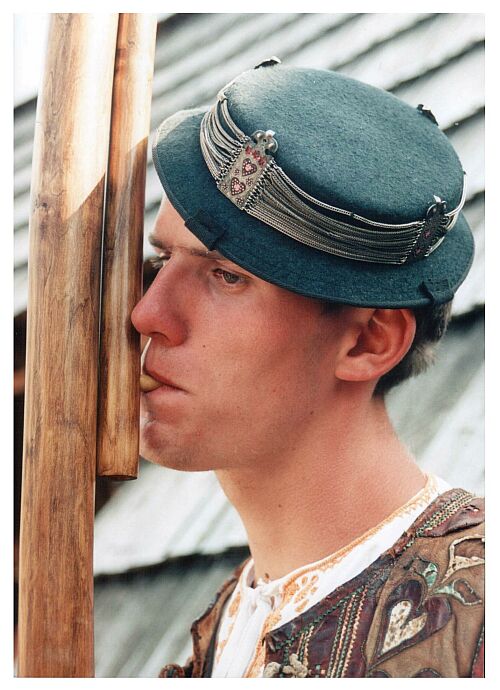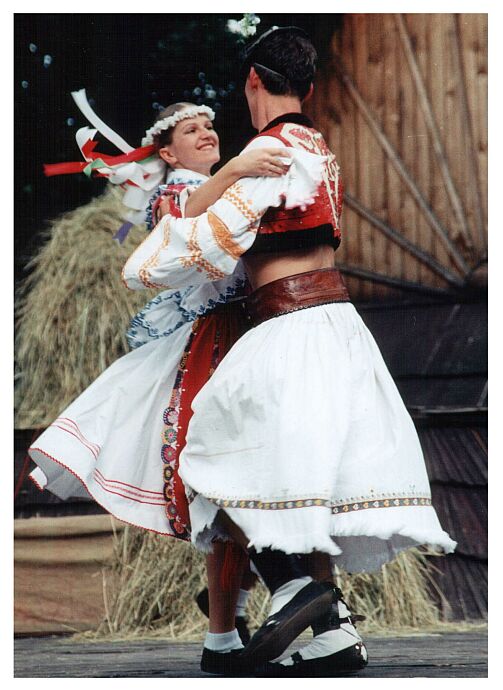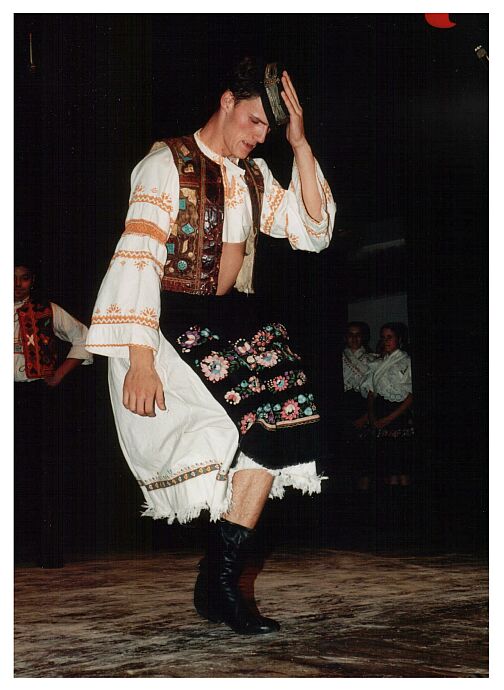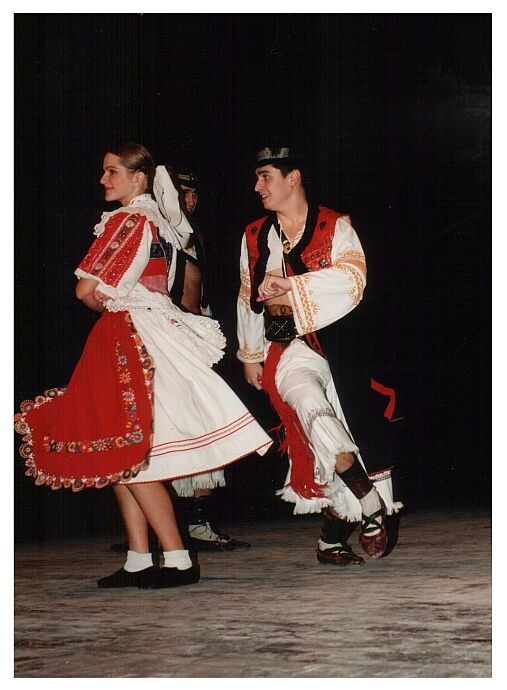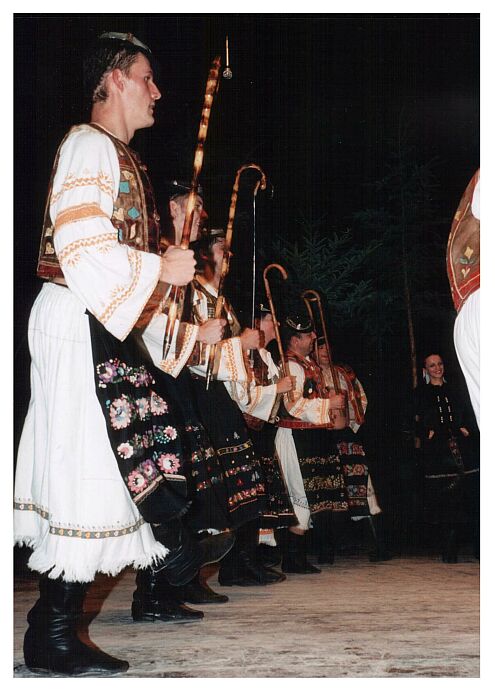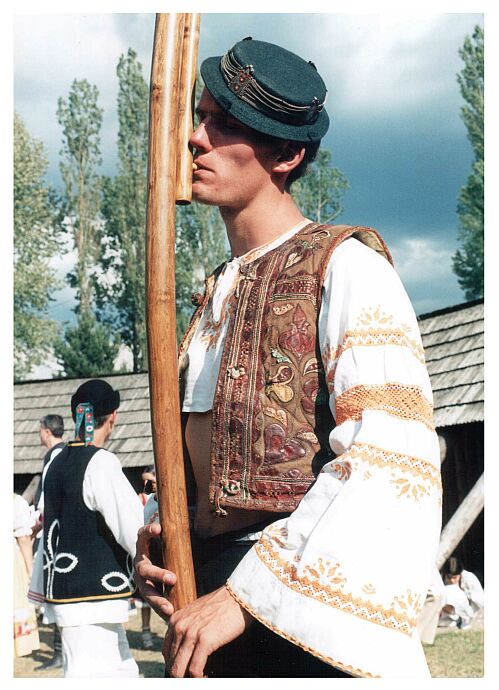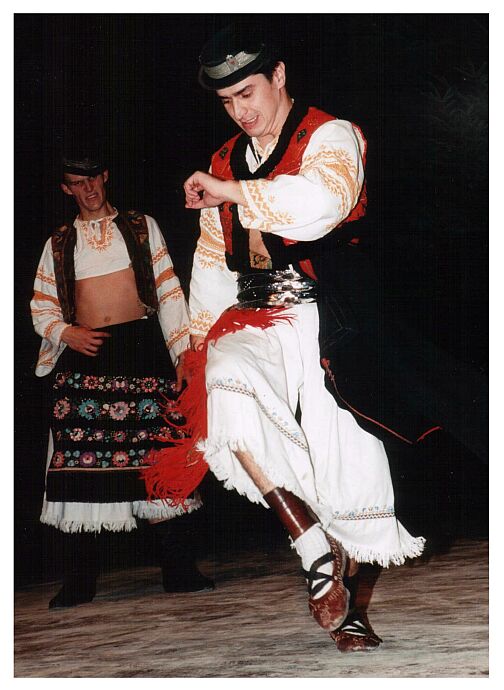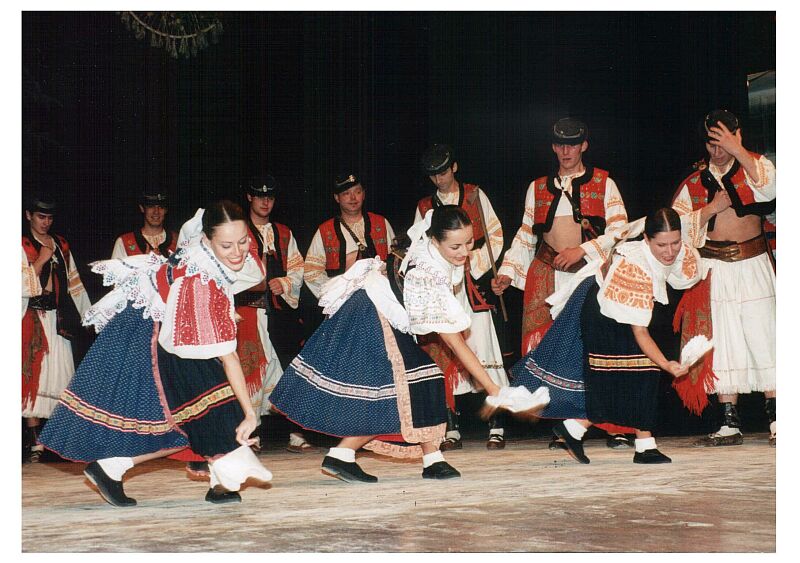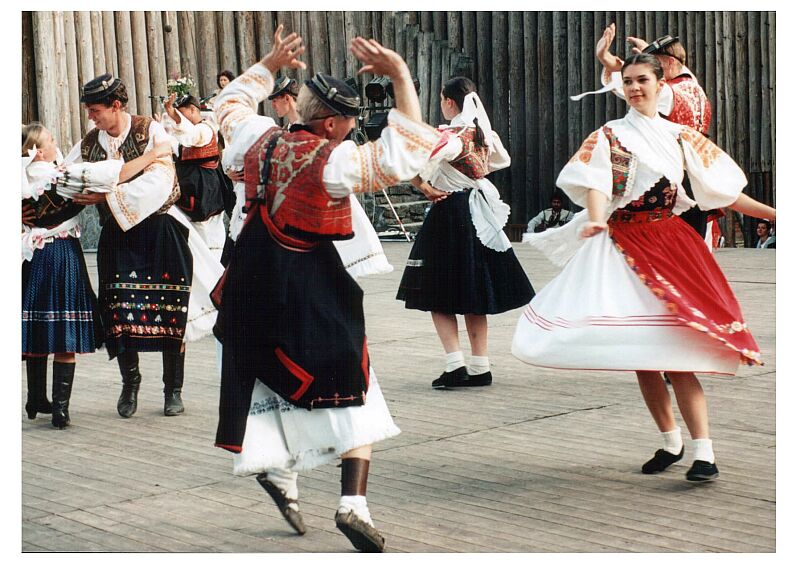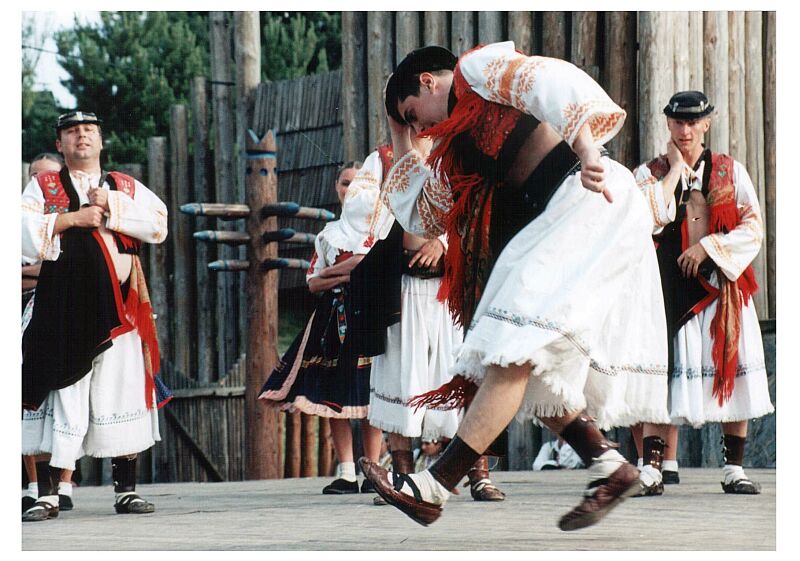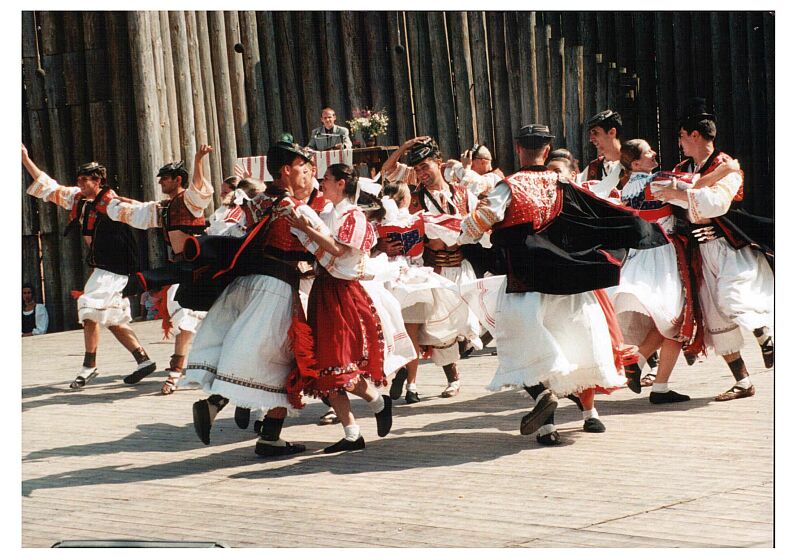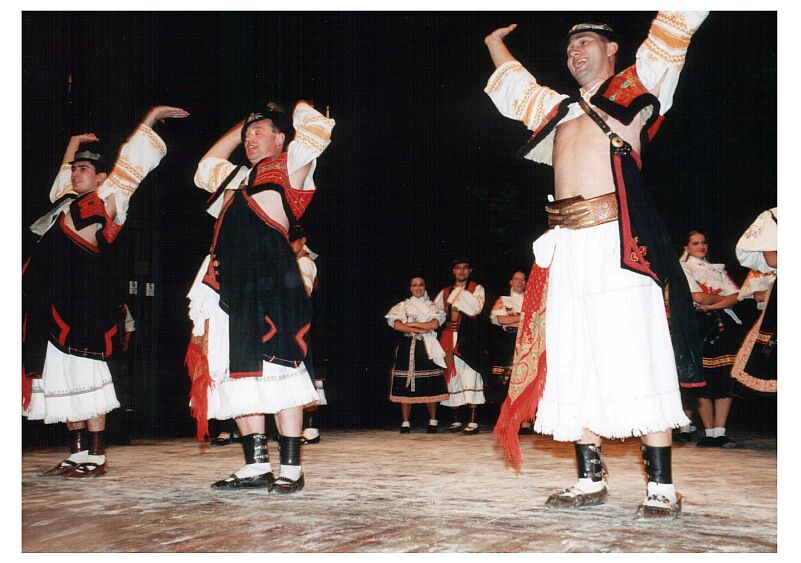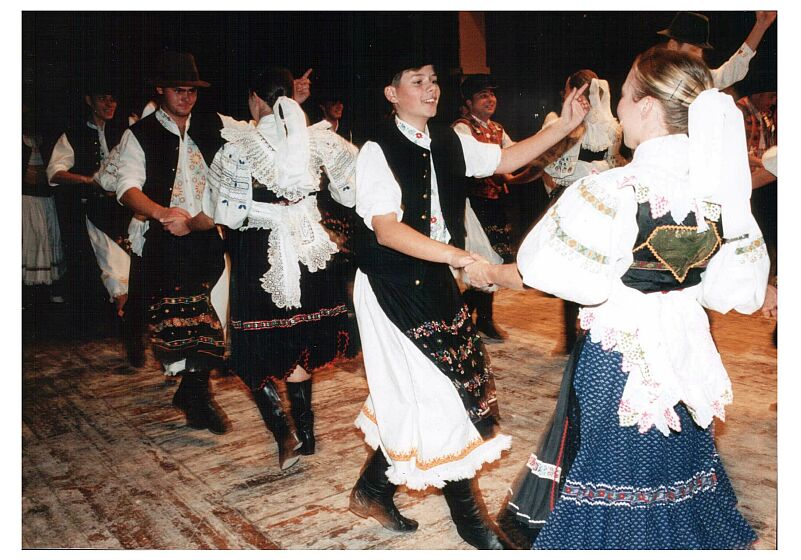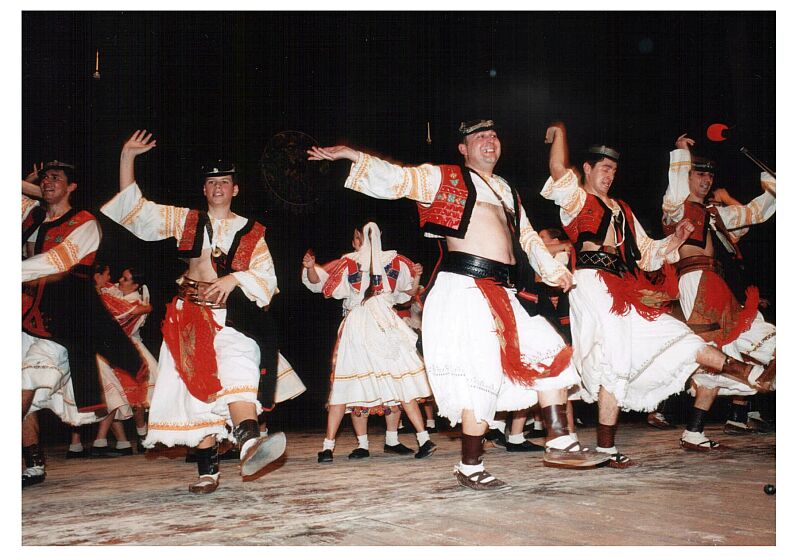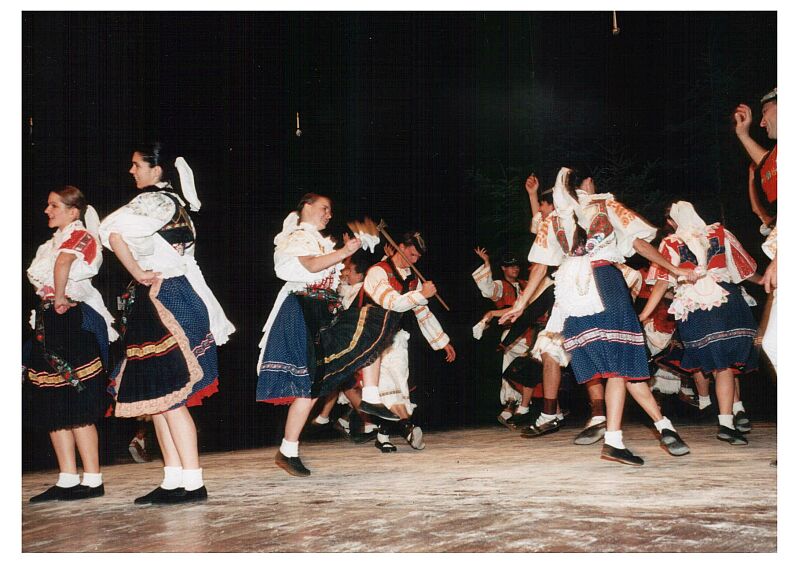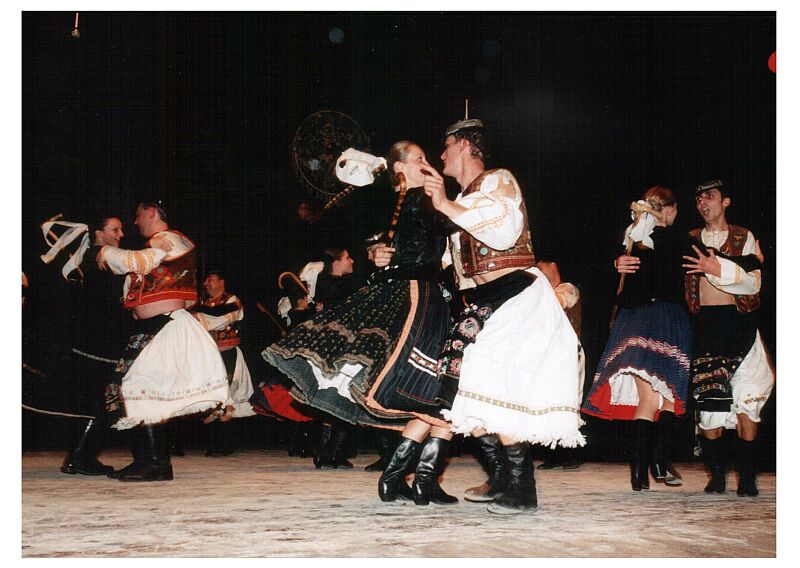Folks \ traditional
artFolks art
One great Slovak writer
and ethnographer of the 19th century Karol Anton Medvecký in his
book about the region of Detva wrote that the folk songs from this
region are of the most precious and their real value cannot be
estimated or expressed. Their folk songs are an authentic expression of
the way of life. At the beginning of the 20th century K. A.
Medvecký was the first to make recordings of this music.
Traditional folk music and
songs from the region of Detva are still well known all around Slovakia
and certainly belong among the most beautiful. Along with the music and
singing traditional folk dances were shaping up and they are so
specific that they can be easily distinguished from others. These have
always been loved, and sometimes even preferred, by the people from
other regions, too, which has been proved many times wherever our
music, dances or songs were presented. This great success provoked
various enthusiasts to come to the region and try to help to preserve
our folk culture. Starting in the 19th century, interested people -
academics and amateur scholars - started to take note of what was being
lost, and there grew various efforts aimed at preserving the music of
the people. One such effort was the collection by A. Halaš in
the deposit of Matica slovenská (Slovakia's public-law cultural
and scientific institution focusing on topics around the Slovak nation).
Contemporaneously composers of
classical music developed a strong interest in folk song collecting,
and a number of outstanding composers carried out their own field work
on folk song. This included Béla Bartók in Hungary. These
composers, like many of their predecessors, incorporated folk material
into their classical compositions.
As folk traditions declined,
there has often been a conscious effort to resuscitate them and folk
groups such as SĽUK and Lúčnica were founded. Many of their
songs and dances were inspired by the folk music and dances from the
region beneath Poľana. Lúčnica is firmly connected with the
personality of its artistic director and choreographer – Prof.
Štefan Nosáľ who is a native of Hriňová. The dance
ensemble is accompanied with an orchestra which is a small professional
group of excellent musicians named „Golden Violin“. For
many years the leader of "Golden Violin" was Ján Berky-Mrenica,
a native of Očová. Thanks to them our folklore became more
spread and known and many other people were inspired to carry on these
traditions. Between the years 1963 and 1970, the Slovak Academy of
Sciences pursued a systematic examination of the regional folk music
(L. Leng), songs (J. Kováčová) and dances (S.
Dúžek) and together with T. Szabó and M. Ruttkay made a
number of recordings and photos of the authentic folklore expressions.
The culmination point of the acknowledgement of the significance of the
folklore of the region of Detva was the organisation of the Folk
Festival underneath Poľana in Detva (Folklórne slávnosti
pod Poľanou). Starting in the year 1966, the festival has been held
annually during the second weekend in July. Festival with its scene in
Detva belongs to the most grandiose shows of folk culture in Slovakia.
The festival contributed to the establishment of several regional folk
groups - Folk Ensemble Detva (1971) accompanied with a Folk Orchestra
Detvanček, Children's Folk Ensemble Ratolesť (1974), Folk Ensemble
Podpoľanec (1975) accompanied with a Folk Orchestra Dúľovec,
Choral Ensemble Detva, Children's Folk Ensemble Rómka, Folk
Orchestra Valaštička, Children's Folk Ensemble Vrchárik.
Songs, music, dances
Music was transmitted by word
of mouth through a community, and in time developed many variants,
because of transmission. Indeed, many traditional folk singers are
quite creative and deliberately modify the material they learn. Much of
our folk music is vocal music, since the instrument that makes such
music is usually handy. As such, it has meaningful lyrics. It might be
a narrative verse (Hej, v šírom poli jedlička, Pasov
Janík dva voly, Preletev fták, Ešte raz sa obzreť
mám, Jedno dievča som na svete, U zelenej rakyty, Rabovali Rusi
(Turci), Idú že len, idú, V tom inglickom poli, Kcev sa
Janík ženiť, Pod javorkom, Ide Kračúň ide, Zabili
Janíčka, Javor, javor, vysoký si...) or love poetry,
often of a tragic or regretful nature. Moreover work songs were
composed; they frequently feature call and response structures, and are
designed to enable the labourers who sing them to coordinate their
efforts in accordance with the rhythms of the songs. Ballads were very
popular, too. Nursery rhymes and nonsense verse also are frequent
subjects of folk songs.
The songs and dances were
often accompanied by the musical instruments. Various instruments have
been very popular. For example fiddle/violin, bagpipes, fujara etc.
Fiddles/violins have always
been very popular not only by the regional people (particularly bands
from Piešť), but also by the Roma musicians. There are still
several families in the region that have led a folk band over the years
(the band often consists of "primáš" - the person who
plays prim, i.e., first violin, two or three other violinists,
contrabass player and a cymbalist).
Another very popular
instrument were bagpipes, even though they quickly receded into the
background. Their songs were slow-pacing and monotonous. At the
beginning of the 20th century there were only a few musicians playing
bagpipes in Detva.
Notwithstanding that "fujara"
was at its best at that time. The fujara is a large folk shepherd's
fipple flute of unique design. It is typically 150-170 cm long, tuned
in G (A and F are also available). It has three tone holes located on
the lower part of the main body. Even though on almost all fujaras the
fundamental frequency can be played, the normal playing technique is
based on overblowing the instrument, and because of its size the
overtones create the possibility to play a diatonic scale using only
three tone holes. The sound is produced by a fipple on the upper end of
the main body of the fujara. The air is led to the fipple by a smaller
parallel pipe, called a "vzduchovod," mounted on the main body of the
instrument. This smaller parallel pipe enables that the player to reach
the three tone holes. The fujara is played standing, with the
instrument held vertically, braced usually against the right thigh.
The atypical design provides
for a deep, meditative timbre. Ornaments are traditionally added to the
base melodies, which usually occur in the mixolydian mode, including
characteristic rapid tone scatter sequences, called "prefuk" (a rapid
overblow of one note) or "rozfuk" (a descending cascade of overtones at
the beginning of a fujara song).
Traditionally, the fujara was
played for pleasure, usually by shepherds. Today, though, the fujara
has moved from the fields to the stage at folklore festivals. The
fujara was included in the UNESCO list of Masterpieces of the Oral and
Intangible Heritage of Humanity, on November 25, 2005.
Every sheperd had besides
fujara 2 - 3 other traditional musical instruments - chalumeaux or
flutes. These were beautifuly decorated. They played on them to pass
the time.
As well as the music, the
dance was also developing rapidly. The most popular folk dances in our
region were "káčerový" (imitating a duck),
"šatkový" (with scarfs), "zajačkový",
"hajdúchy" (men's dance), "verbunk" (men's dance) etc.
Children's Folklore Ensemble Ratolesť
Children's Folklore Ensemble
Ratolesť was established in autumn in 1974 and it works in the Centre
voľného času Trend in Detva. It has more than 60 members, mostly
children from the age of 6 to 15. Children are the part of dance
ensemble, a chorus or a folk band. The repertoire of the ensemble is
created of the beautiful regional customs and usage and is aimed on
preserving the local traditional culture.
Folk Ensemble Podpoľanec (1975) accompanied with a Folk Orchestra Dúľovec 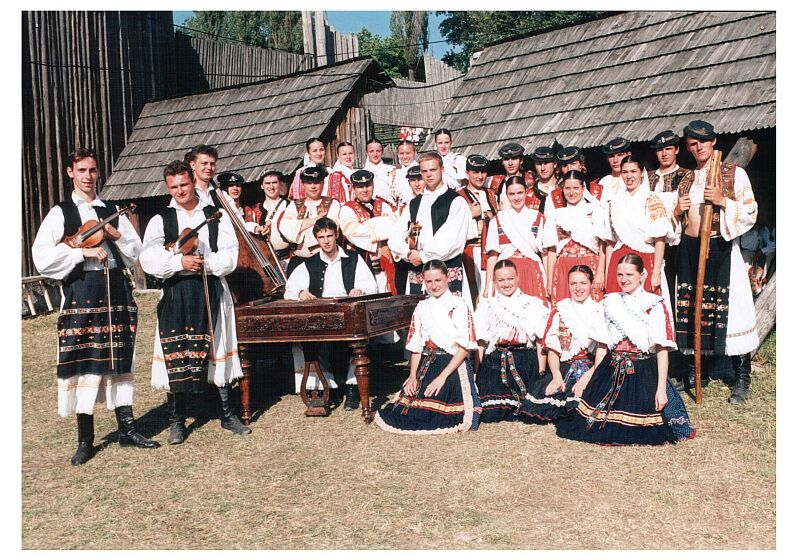
The folk ensemble was established in the year 1975. What unites the
members of the group is the idea of preserving Slovak folklore for next
generations. The ensemble aims at preserving of customs and culture of
the region of Detva. Over the years the ensemble has become one of the
most prominent ensembles in Slovakia, which has been many times proven
by various awards, not only in Slovakia, but also abroad. The ensemble
has over 25 years had more than 300 members and had over 700 public
performances, and
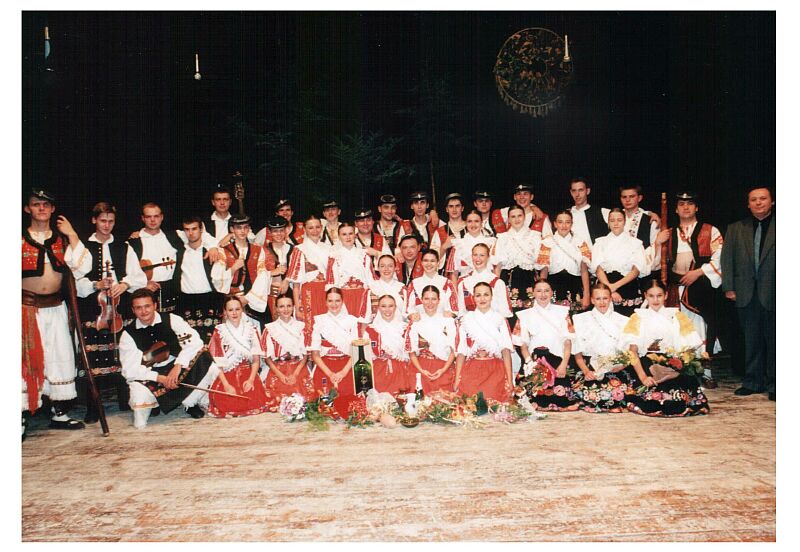
visited 14 European countries. The whole 25 years history of the
Podpoľanec is firmly connected with the personality of its
choreographer – Jozef Kulišiak. His artistic genius and
unique invention left deep imprint in the ensemble.
At present days the ensemble has 40 members. The trainings are 2 times
per week for three hours. The basis of the Podpoľanec is its dance
ensemble accompanied with the Folk Orchestra Dúľovec, Women
Choral and individual musicians.
The ensemble has over the years prepared various programs that can be
presented on the festivals, celebrations, concerts etc. The length and
the composition of the
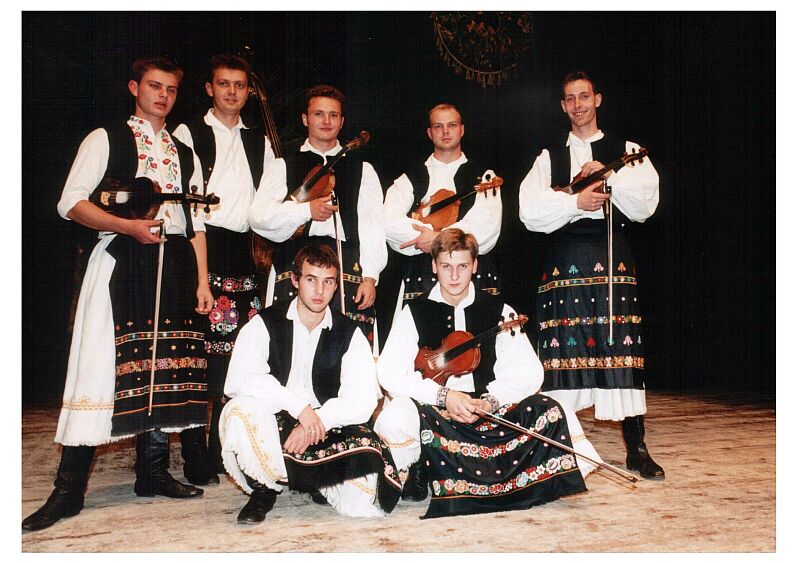
program might be adapted according to the requirement. The ensemble can
perform as a whole (cca. 37 performers) or just a part (cca. 12
performers).
Board of the Podpoľanec:
Administrative director: Ing. Jozef Lapín
Artistic director: Pavel Gažo
Choreographer : Jozef Kulišiak, Pavel Gažo
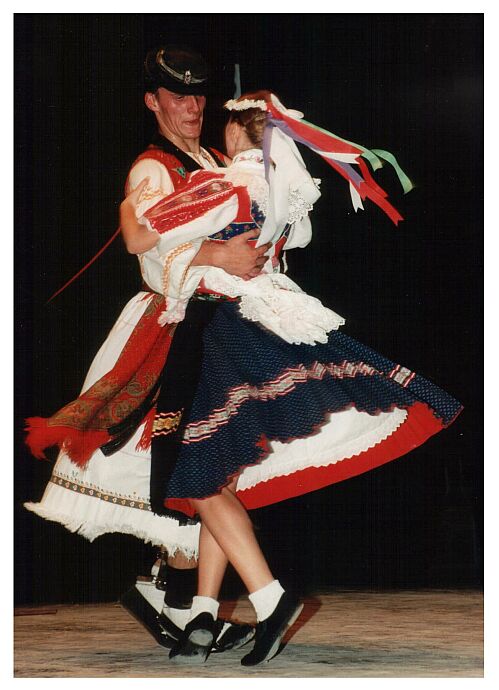
Manager : Dušan Gelin
Director of the Orchestra Dúľovec: Stanislav Helienek
Prim violinists of the Orchestra Dúľovec : Peter Konôpka
Dance teacher : Branislava Vávrová, Juraj Hanes
Contact:
Folklórny súbor Podpoľanec
Štúrova 848
962 12 DETVA
Tel. : 0905 509 499, 0907 817 843
++ 421/45/5469 250 - after 6 p.m.

 visited 14 European countries. The whole 25 years history of the
Podpoľanec is firmly connected with the personality of its
choreographer – Jozef Kulišiak. His artistic genius and
unique invention left deep imprint in the ensemble.
visited 14 European countries. The whole 25 years history of the
Podpoľanec is firmly connected with the personality of its
choreographer – Jozef Kulišiak. His artistic genius and
unique invention left deep imprint in the ensemble.  program might be adapted according to the requirement. The ensemble can
perform as a whole (cca. 37 performers) or just a part (cca. 12
performers).
program might be adapted according to the requirement. The ensemble can
perform as a whole (cca. 37 performers) or just a part (cca. 12
performers). 
